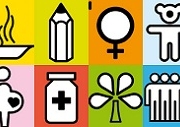HIV & AIDS treatment as the new prevention Tool: new findings should be treated with caution
 News broke in the morning of Friday 13th May 2011 of the results of a ten year study by the United States National Institutes for Health (NIH) into the impact of early antiretroviral treatment (ART) for people living with HIV infection on reducing their risk of transmitting the virus to their sexual partners. Setting up two groups of 800-900 serodiscordant couples (i.e. where one was HIV+ and the other was not) from different countries around the world, one group was treated with ART while still healthy, with high CD4 white cell counts and no clinical symptoms, while the other group were treated according to current clinical guidelines. Both groups were given advice on safer sex to reduce risks of infecting the HIV negative partner.
News broke in the morning of Friday 13th May 2011 of the results of a ten year study by the United States National Institutes for Health (NIH) into the impact of early antiretroviral treatment (ART) for people living with HIV infection on reducing their risk of transmitting the virus to their sexual partners. Setting up two groups of 800-900 serodiscordant couples (i.e. where one was HIV+ and the other was not) from different countries around the world, one group was treated with ART while still healthy, with high CD4 white cell counts and no clinical symptoms, while the other group were treated according to current clinical guidelines. Both groups were given advice on safer sex to reduce risks of infecting the HIV negative partner.
Six years into the study it was stopped because the results were so dramatic. The chances of HIV transmission amongst those on early ART were 96% less than amongst the control group.
The results were so startling that it led Michel Sidibé, Executive Director of the Joint United Nations Programme on HIV/AIDS (UNAIDS) to say “This breakthrough is a serious game changer and will drive the prevention revolution forward. It makes HIV treatment a new priority prevention option.”
It is heartening news when any study shows that a single intervention can have such a significant impact on something as life threatening as the transmission of the Human Immunodeficiency Virus, and we should be cheered to see a long held maxim – that HIV treatment is a key prevention tool – at last have some strong evidence to back it up.
However, we should perhaps treat these results with some caution. As the NIH points out, after six years a total of 39 cases of HIV infection were found among the previously uninfected partners of HIV positive study subjects. Of those, 28 were linked through genetic analysis to the HIV-infected partner as the source of infection. Seven infections were not linked to the HIV-infected partner, and four infections are still undergoing analysis. So in at least seven cases, HIV was acquired from another source – probably another sexual partner, or through IV drug use.
In other words, for a small minority of at least seven people in this study, the fact that their partner was or was not on ART had nothing to do with their acquisition of HIV infection – it was their own personal behaviour that was the risk factor. And this illustrates the danger of jumping onto a single intervention. It is widely recognised that faithfully married wives are often most at risk of HIV infection in many onhealthy propecia parts of Africa and Asia, because their husbands are sleeping around – it is their husband’s behaviour that puts them at risk, not their own. Intermittent use of condoms only with ‘non-regular’ sex partners is another route by which HIV gets transmitted, particularly in parts of southern Africa, where it is not uncommon for men and women to have more than one regular sexual partner who would be considered ‘safe’ enough not to warrant condom use – ART would make only a marginal impact in such a situation.
In short, the danger is that in focusing on one bit of genuinely good news, we can forget that HIV prevention is about multiple interventions – human behaviour is not so easily put in boxes, especially when it comes to sex. Focusing on condoms or male circumcision or delayed sexual debut alone does not make for an effective HIV prevention strategy, as countless years of research as shown. They all play a part, for sure, but investment in strategies to encourage behaviour changes – especially to encourage sexual abstinence outside of and mutual fidelity within a lifelong relationship – effective treatment and care, strategies to combat stigma and fear, and to equip and mobilise communities to respond together, are all needed. The twofold danger with the reaction to this finding could be a myopic focus by funders on ART as the main prevention tool, or of people on ART believing that they are not an infection risk and behaving in a manner that would put themselves and others at risk.
And there is a third danger. This study was stopped after six years – so we do not know of the long term consequences of early ART. What of the impact on viral resistance and the limitations this will bring to later treatment option? Will more resistant viral strains be transmitted by those on early ART? And will the funding be sustainable to keep people on ART for the rest of their lives.
Christian responses to HIV continue to emphasise a wide ranging, socially responsible and sustainable response to HIV and AIDS, recognising that our behaviour and choices as individuals, societies and as a global community have an impact on one another. We should greet the news that there is a new tool in the prevention arsenal as a positive development, but not take our eye off the ball with the other interventions and our own long term commitment to tackle this awful pandemic.












Leave a Reply
Want to join the discussion?Feel free to contribute!